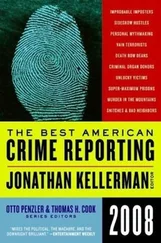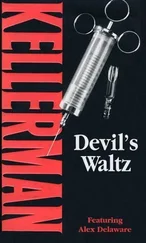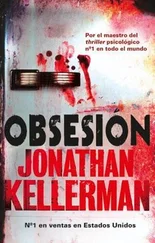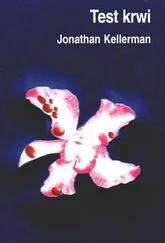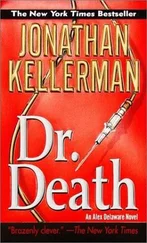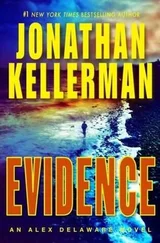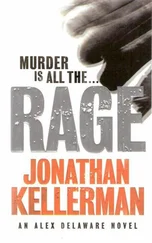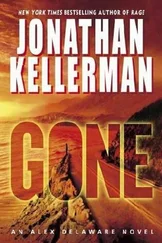Jonathan Kellerman - Blood Test
Здесь есть возможность читать онлайн «Jonathan Kellerman - Blood Test» весь текст электронной книги совершенно бесплатно (целиком полную версию без сокращений). В некоторых случаях можно слушать аудио, скачать через торрент в формате fb2 и присутствует краткое содержание. Город: New York, Год выпуска: 1986, ISBN: 1986, Издательство: Atheneum, Жанр: Триллер, на английском языке. Описание произведения, (предисловие) а так же отзывы посетителей доступны на портале библиотеки ЛибКат.
- Название:Blood Test
- Автор:
- Издательство:Atheneum
- Жанр:
- Год:1986
- Город:New York
- ISBN:978-0689116346
- Рейтинг книги:4 / 5. Голосов: 1
-
Избранное:Добавить в избранное
- Отзывы:
-
Ваша оценка:
- 80
- 1
- 2
- 3
- 4
- 5
Blood Test: краткое содержание, описание и аннотация
Предлагаем к чтению аннотацию, описание, краткое содержание или предисловие (зависит от того, что написал сам автор книги «Blood Test»). Если вы не нашли необходимую информацию о книге — напишите в комментариях, мы постараемся отыскать её.
Blood Test — читать онлайн бесплатно полную книгу (весь текст) целиком
Ниже представлен текст книги, разбитый по страницам. Система сохранения места последней прочитанной страницы, позволяет с удобством читать онлайн бесплатно книгу «Blood Test», без необходимости каждый раз заново искать на чём Вы остановились. Поставьте закладку, и сможете в любой момент перейти на страницу, на которой закончили чтение.
Интервал:
Закладка:
I drove a hundred feet before finding space to pull over. Nosing the Seville as close as possible to a stand of eucalyptus, I parked, took the tools and flashlight, and backtracked on foot.
The lock was brand new. Probably affixed by Houten. The chain was plastic-coated steel. It resisted the bolt cutters for a moment then split like overcooked sausage. I opened the gate, slipped through, closed it, and rearranged the severed links to conceal the surgery.
The driveway was gravel and responded to my footsteps with breakfast cereal sounds. The flashlight revealed a two-story frame house, at first glance not unlike Maimon’s. But this structure seemed to sag on its foundation, the wood splintered and peeling. The roof was tar paper and bald in several places, the windows framed by warped casements. I placed my foot on the first porch step and felt the wood give under my weight. Dry rot.
An owl hooted. I heard the rasping friction of wings, raised my beam to catch the big bird in flight. Then a broad swoop, the scurrying panic of prey, a thin squeak, and silence once again.
The front door was locked. I considered various means of snapping the lock and stopped midthought, feeling furtive and vaguely criminal. Looking up at the ravaged mass of the decrepit house, I remembered the fate of its inhabitants. Inflicting further damage seemed a heedless act of vandalism. I decided to try the back door.
I stumbled on a loose board, caught my balance, and walked around the side of the house. I hadn’t taken a dozen steps when I heard the sound. An incessant dripping, rhythmic and oddly melodic.
There was a junction box in the same place as the one at Maimon’s. It was rusted shut and I had to use the crowbar to pry it open. I tried several switches and got no response. The fourth brought on the lights.
There was a single greenhouse. I entered it.
Long heavy wooden tables ran the length of the glass building. The bulbs I’d switched on were dim and bluish, casting a milky glaze over the creations that rested on the heavy planks. At the peak of the ceiling were winches and pulleys designed to open the roof.
The source of the dripping sound became evident: a reptilian system of overhead irrigation operated by old-fashioned dialed timers and suspended from the crossbeam.
Maimon had been wrong about there being nothing but dust behind the Swopes’ gates. The greenhouse contained a plethora of growing things. Not flowers. Not trees. Things.
I’d thought of the Sephardic grower’s nursery as an Eden. What I saw now was a vision from Hell.
Exquisite care had been taken to create a jungle of botanic monstrosities.
There were hundreds of roses that would never fill a bouquet. Their blossoms were shriveled, stunted, colored a deathly gray. Each flower was ragged-edged, irregular, and covered with a layer of what looked like moist fur. Others boasted three inch thorns that turned stem and stalk into deadly weapons. I didn’t stoop to smell the flowers but the stench reached me anyway, pungently warm, aggressively rancid.
Next to the roses was a collection of carnivorous plants. Venus’s-flytraps, pitcher plants, others I couldn’t identify. All were larger and more robust than any I’d seen. Green maws hung open. Sap oozed from tendrils. On the table was a rusty kitchen knife and a slab of beef cut into tiny pieces. Each cube teemed with maggots, many of them dead. One of the flesh-craving plants had managed to lower its mouth to the table and snare some of the white worms with it’s deadly-sweet exudate. Nearby were more goodies for the carnivores — a coffee can heaped to the brim with dried beetles and flies. The heap shuddered. Out crawled a live insect, a wasp-like creature with a pincer mouth and swollen abdomen. It stared at me and buzzed off. I followed its trajectory. When it had flown out the door, I ran over and slammed it shut. The glass panes vibrated.
And all the while the steady drip-drip from the pipes overhead, keeping everything nice and healthy...
Weak-kneed with nausea I walked on. There was a collection of bonsai oleanders, leaves ground to powder and stored in canisters. The granulate had apparently been tested on field mice for poison content. All that remained of the rodents were teeth and bones enshrouded in flesh tanned by rigor mortis. They’d been left to their terminal agonies, paws begging stiffly. The droppings had been used to fertilize trays of toadstools. Each tray was labeled: Amanita muscaria. Boletus miniato-olivaceus. Helvetia esculenta.
The plants in the next section were fresh and pretty but equally deadly: hemlock. Foxglove. Black henbane. Deadly nightshade. An ivylike beauty identified quaintly as poisonwood.
There were fruit trees as well. Acrid smelling oranges and lemons, pruned and twisted to nothingness. An apple tree laden with grotesquely misshapen tumors masquerading as fruit. A pomegranate bush slimy with mucoid jelly. Flesh-colored plums harboring colonies of gyrating worms. Mounds of fruit rotted on the ground.
On and on it went, a stinking, repulsive nightmare factory. Then suddenly, something different:
Against the far wall of the greenhouse was a single tree in a hand-painted clay pot. Well-shaped, healthy, and obtrusively normal. A hill had been formed from the dirt that floored the greenhouse and the potted tree rested on it, elevated, as if an object of worship.
A lovely looking tree, with drooping elliptical leaves and fruit resembling leathery green pine cones.
Once outside I gulped fresh air greedily. Behind the greenhouse was a stretch of barren land ending at a black wall of forest. A good place for hiding. Using the flashlight beam for guidance I made my way between the massive trunks of redwood and fir. The forest floor was a spongy mattress of humus. Small animals scampered in the wake of my intrusion. Twenty minutes of searching and prodding revealed no trace of human habitation.
I walked back to the house and switched off the greenhouse lights. The padlock on the back door was fastened to a cheap hasp that yielded to a single twist of the crowbar.
I entered the dark house through a service porch that connected to a large cold kitchen. Electricity and water had been shut off. The greenhouse must have run off a separate generator. I used the flashlight to guide me.
The rooms downstairs were musty and stingily furnished, the walls devoid of paintings or photographs. An oval hooked rug covered the living room floor. Bordering it were a thrift shop sofa and two aluminum folding chairs. The dining room was storage space for cardboard cartons full of old newspapers and bound cords of firewood. Bedsheets had been used for curtains.
Upstairs were three bedrooms, each containing crude, rickety furniture and cast-irons beds. The one that had been Woody’s bore a semblance of cheer — a toybox next to the bed, superhero posters on the walls, a Padres banner over the headboard.
Nona’s dresser was blanketed with cut-glass perfume atomizers and bottles of lotion. The clothes in her closet were mostly jeans and skimpy tops. The exceptions were a short rabbit jacket of the type Hollywood streetwalkers used to favor and two frilly party dresses, one red, one white. Her drawers were crammed with nylons and lingerie and scented with a homemade sachet. But like the rooms below, her private space was emotionally blank, unmarked by personal touches. No yearbooks, diaries, love letters, or souvenirs. I found a crumpled scrap of lined notebook paper in the bottom drawer of the dresser. It was brown with age and covered, like some classroom punishment, with hundreds of repetitions of the same single sentence: FUCK MADRONAS.
Garland and Emma’s bedroom had a view of the greenhouse. I wondered if they’d woken in the morning, peered down at the chamber of mutations and been warmed by a self-congratulatory glow. There were two single beds with a nightstand between them. All available floorspace was given over to cardboard boxes. Some were filled with shoes, others with towels and linens. Still others held nothing but other cardboard boxes. I opened the closet. The parents’ wardrobes were meager, shapeless, decades out of style and biased toward grays and browns.
Читать дальшеИнтервал:
Закладка:
Похожие книги на «Blood Test»
Представляем Вашему вниманию похожие книги на «Blood Test» списком для выбора. Мы отобрали схожую по названию и смыслу литературу в надежде предоставить читателям больше вариантов отыскать новые, интересные, ещё непрочитанные произведения.
Обсуждение, отзывы о книге «Blood Test» и просто собственные мнения читателей. Оставьте ваши комментарии, напишите, что Вы думаете о произведении, его смысле или главных героях. Укажите что конкретно понравилось, а что нет, и почему Вы так считаете.

